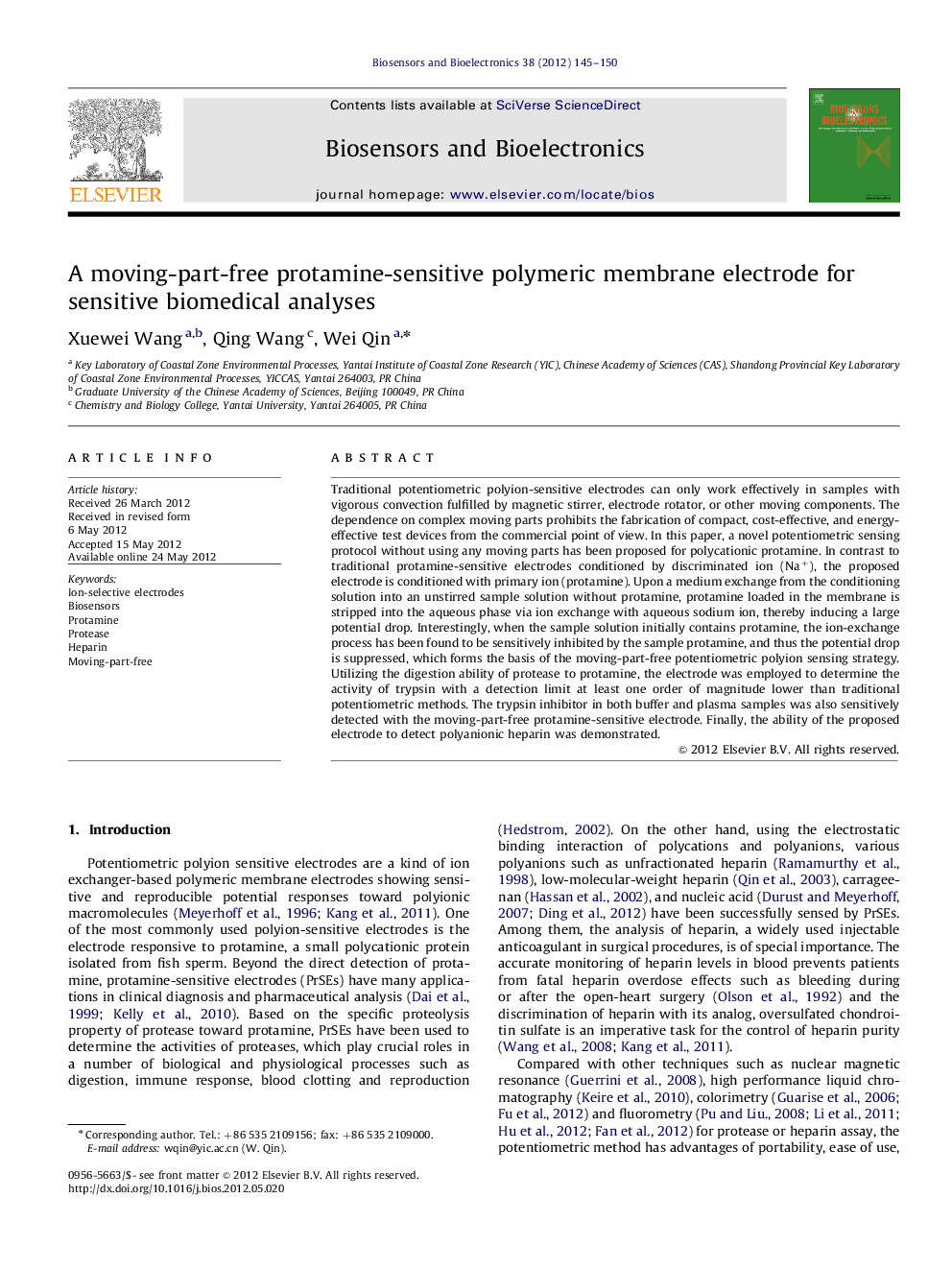| Article ID | Journal | Published Year | Pages | File Type |
|---|---|---|---|---|
| 867282 | Biosensors and Bioelectronics | 2012 | 6 Pages |
Traditional potentiometric polyion-sensitive electrodes can only work effectively in samples with vigorous convection fulfilled by magnetic stirrer, electrode rotator, or other moving components. The dependence on complex moving parts prohibits the fabrication of compact, cost-effective, and energy-effective test devices from the commercial point of view. In this paper, a novel potentiometric sensing protocol without using any moving parts has been proposed for polycationic protamine. In contrast to traditional protamine-sensitive electrodes conditioned by discriminated ion (Na+), the proposed electrode is conditioned with primary ion (protamine). Upon a medium exchange from the conditioning solution into an unstirred sample solution without protamine, protamine loaded in the membrane is stripped into the aqueous phase via ion exchange with aqueous sodium ion, thereby inducing a large potential drop. Interestingly, when the sample solution initially contains protamine, the ion-exchange process has been found to be sensitively inhibited by the sample protamine, and thus the potential drop is suppressed, which forms the basis of the moving-part-free potentiometric polyion sensing strategy. Utilizing the digestion ability of protease to protamine, the electrode was employed to determine the activity of trypsin with a detection limit at least one order of magnitude lower than traditional potentiometric methods. The trypsin inhibitor in both buffer and plasma samples was also sensitively detected with the moving-part-free protamine-sensitive electrode. Finally, the ability of the proposed electrode to detect polyanionic heparin was demonstrated.
► A sensing principle based on stripping of protamine from a membrane is proposed. ► Concept allows potentiometric measurements to be done without any moving parts. ► Trypsin and its inhibitors can be sensitively detected by the proposed electrode. ► Heparin can be measured by the electrode based on its interaction with protamine.
